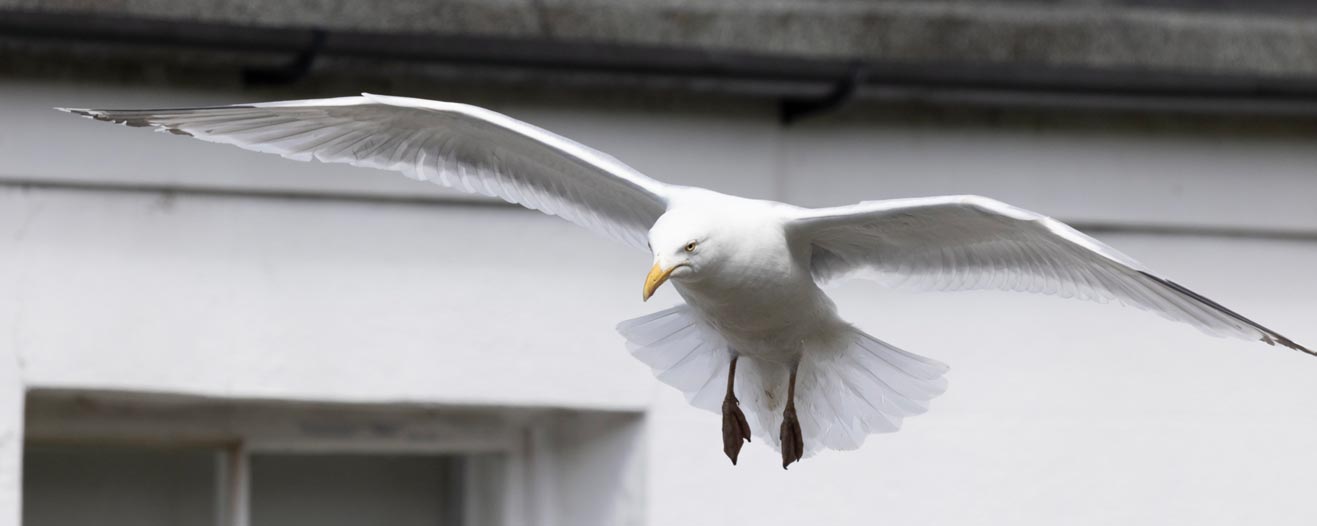- Find a Pet
- Advice and Welfare
- Ways to Give
- Get Involved
- What We Do
- Search
- My RSPCA
- Report a concern
- Sponsor
-
Colour modeVivid Calm
- Home
- Advice and welfare
- Wildlife
- Birds
- Gulls
Gulls
Did you know there's no such thing as a seagull? In fact, there are a variety of gull species that live in the UK and not all of them live by the sea.

Common gull species
The gulls you see at the beach are most likely to be herring gulls, lesser black-backed gulls and great black-backed gulls.
Herring gull
- Large in size
- Pale grey wings
- Pink legs
- A white head in the summer but dark streaks in winter

Lesser black-backed gulls
- Slightly smaller in size
- Darker grey wings with black wingtips
- Yellow legs

Great black-backed gulls
- Big size (biggest in fact!)
- Big beak
- Black wings
- Pale-pink legs

Where gulls live
Although they're usually found around the coast, many gulls also live inland for at least part of the year. They often roost in flocks. You might see them in grassy areas like public parks, sports fields, farmland as well as landfill sites where they look for food.
There are three species of gulls in particular that have adapted well to nesting in urban areas, and will often build their nests on roofs - herring gulls, great black-backed gulls and lesser black-backed gulls. Urban areas are often preferred by gulls because there are fewer predators and a constant supply of food.
What gulls eat
Gulls are opportunists and will take advantage of whatever food they can find in their environment. Their diet is mostly made up of fish, molluscs, invertebrates and discarded human food.
For advice on how to stop gulls from stealing my food?
When gulls breed and lay their eggs
Gull chicks will leave the nest when they're just a few days old and move to a 'safe' location nearby, so it's not unusual to see them on the ground.
Gull chicks will leave the nest when they're just a few days old and move to a 'safe' location nearby, so it's not unusual to see them on the ground.
What different gull calls mean
Have you always wondered what gulls are actually trying to communicate with different calls?
Please enter a valid video URL.
The URL can point to any Facebook, Twitch, Vimeo or Youtube video.
Gulls and their nest are protected by law
Like all wild birds, gulls, their chicks and their nests are protected under the Wildlife and Countryside Act 1981. This means it's illegal to intentionally kill, take or injure gulls, take or destroy their eggs, or damage or destroy any gull nests while they're in use or being built - unless you're acting under licence.
Although gulls are a common sight in many areas near the coast, some species of gull, such as herring gulls and kittiwakes, are actually on the UK Red List. They're considered species of conservation concern in the UK because there's evidence suggesting that their populations are in decline overall.



